-
Soil’s carbon storage could help limit impact of climate change
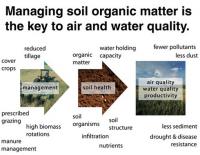
Soils currently lock away around 2.4 trillion tons of greenhouse gases, which are stored underground as stable organic matter. Researchers say the world’s soils could store an extra eight billion tons of greenhouse gases, helping to limit the impacts of climate change. Growing crops with deeper root systems, using charcoal-based composts, and applying sustainable agriculture practices could help soils retain the equivalent of around four-fifths of annual emissions released by the burning of fossils fuels, the researchers say.
-
-
Water cycle instability posing major political and economic risks: UN experts
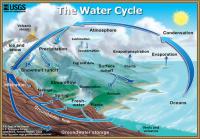
The current instability and unpredictability of the world water cycle is here to stay, making society’s adaptation to new risks a vital necessity when formulating development policies, a UN water expert warns. “What we haven’t understood until now is the extent to which the fundamental stability of our political structures and global economy are predicated on relative stability and predictability of the water cycle — that is, how much water becomes available in what part of the year. As a result of these new water-climate patterns, political stability and the stability of economies in most regions of the world are now at risk,” the expert says.
-
-
Renewables and nuclear no substitute for carbon dioxide disposal
Oxford scientist argues that there are only two things we can affect with policies today that will really matter for peak warming: reducing the cost of large-scale capture and disposal of carbon dioxide, and maximizing the average rate of economic growth we achieve for a given rate of emission in the meantime.
-
-
Flooding, accelerated sea-level rise in Miami over last decade
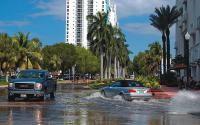
Miami Beach flood events have significantly increased over the last decade due to an acceleration of sea-level rise in South Florida. Scientists suggest that regional sea-level projections should be used in place of global projections to better prepare for future flood hazards in the region.
-
-
Global warming of 2.5°C degrees would put at risk trillions of dollars of world’s financial assets
An average of $2.5 trillion, or 1.8 percent, of the world’s financial assets would be at risk from the impacts of climate change if global mean surface temperature rises by 2.5°C (4.5°F) above its pre-industrial level by 2100, according to a new study. that the authors found, however, that uncertainties in estimating the “climate Value at Risk” mean that there is a 1 percent chance that warming of 2.5°C could threaten $24 trillion, or 16.9 percent, of global financial assets in 2100.
-
-
California drought patterns becoming more common
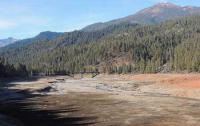
Atmospheric patterns resembling those that appeared during the latter half of California’s ongoing multi-year drought are becoming more common. The current record-breaking drought in California has arisen from both extremely low precipitation and extremely warm temperature. The new study found clear evidence that atmospheric patterns that look like those seen during this extreme drought have in fact become more common in recent decades.
-
-
Analyzing the effects of rising sea levels in Norfolk, Va.
In Norfolk, Virginia, an East Coast city which is home to the world’s largest naval station and important seaports, catastrophic flooding could damage more than homes and roads. A new study from Sandia National Laboratories assesses how much the city, its region, and the nation would suffer in damages to national assets and lost economic activity if it does nothing to address rising sea levels. The analysis method is available to cities that want to become more resilient.
-
-
Rapid Antarctica ice melt: Sea-level rise nearly double over earlier estimates
A new study suggests that the most recent estimates by the Intergovernmental Panel on Climate Change for future sea-level rise over the next 100 years could be too low by almost a factor of two. The researchers incorporated into their models mechanisms that were previously known but never incorporated in a model like this before, and added them to their ice-sheet model, so they could consider the effects of surface melt water on the break-up of Antarctica’s ice shelves and the collapse of vertical ice cliffs.
-
-
Starvation is only one crop breeding cycle away
Global population growth, urbanization, and a changing climate mean staple food crops will need to achieve much higher yields in the near future. New research proposes genetic engineering solutions to improve photosynthetic efficiency of food crops, boosting yield under higher temperatures and carbon dioxide levels. Because it can take twenty to thirty years of breeding and product development efforts before new crops are available to farmers, those efforts must start now.
-
-
Water problems in Asia’s future?
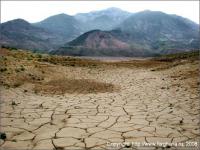
Economic and population growth on top of climate change could lead to serious water shortages across a broad swath of Asia by the year 2050. Having run a large number of simulations of future scenarios, the researchers find that the median amounts of projected growth and climate change in the next thirty-five years in Asia would lead to about one billion more people becoming “water-stressed” compared to today.
-
-
1.4 billion people face severe natural disaster risks in South Asia
New data has revealed that 1.4 billion people in South Asia, or 81 percent of the region’s population, are acutely exposed to at least one type of natural hazard and live in areas considered to have insufficient resources to cope with and rebound from an extreme event. Poor governance, weak infrastructure, and high levels of poverty and corruption amplify the economic and humanitarian losses associated with significant natural hazards events – and these factors will exacerbate the consequences of natural disasters especially in Africa, a continent which hosts eight out of the nine countries most vulnerable to natural hazards.
-
-
Quantifying climate-driven impacts on the Colorado Basin, developing response strategies
The Colorado basin — roughly 11 percent of the United States — directly supports water supply for more than thirty million people, accounts for approximately 15 percent of U.S. crops and livestock, and provides 53 gigawatts of power generation capacity. Climate-driven heat-stress and forest mortality on the Colorado River watershed are expected to reduce river flows basin-wide out to the year 2100.
-
-
To avoid multiple climate tipping points, CO2 emissions should be stopped by 2050: Study
To avoid multiple climate tipping points, policy makers need to act now to stop global CO2 emissions by 2050 and meet the Paris Agreement’s goal of limiting global warming to 1.5 °C above pre-industrial levels, a new study has said. The new research shows that existing studies have massively under-valued the risk that ongoing carbon dioxide emissions pose of triggering damaging tipping points.
-
-
2015 made history with record heat, weather extremes: WMO
The year 2015 made history, with shattered temperature records, intense heatwaves, exceptional rainfall, devastating drought, and unusual tropical cyclone activity, according to the World Meteorological Organization. That record-breaking trend has continued in 2016. The global average surface temperature in 2015 broke all previous records by a wide margin, at about 0.76° Celsius above the 1961-1990 average because of a powerful El Niño and human-caused global warming. With 93 percent of excess heat stored in the oceans, ocean heat content down to 2,000 meters also hit a new record.
-
-
Expanding use of recycled water would benefit the environment, human health
More than 1 in 9 people around the world, about 750 million, do not have access to safe, clean drinking water, and the problem is expected to worsen in step with rising greenhouse gas concentrations, population increases and climate change. Researchers found that found that recycled water has great potential for more efficient use in urban settings and to improve the overall resiliency of the water supply.
-
- All
- Regional
- Water
- Biometrics
- Borders/Immig
- Business
- Cybersecurity
- Detection
- Disasters
- Government
- Infrastructure
- International
- Public health
- Public Safety
- Communication interoperabillity
- Emergency services
- Emergency medical services
- Fire
- First response
- IEDs
- Law Enforcement
- Law Enforcement Technology
- Military technology
- Nonlethal weapons
- Nuclear weapons
- Personal protection equipment
- Police
- Notification /alert systems
- Situational awareness
- Weapons systems
- Sci-Tech
- Sector Reports
- Surveillance
- Transportation
Advertising & Marketing: advertise@newswirepubs.com
Editorial: editor@newswirepubs.com
General: info@newswirepubs.com
2010-2011 © News Wire Publications, LLC News Wire Publications, LLC
220 Old Country Road | Suite 200 | Mineola | New York | 11501
Permissions and Policies
Editorial: editor@newswirepubs.com
General: info@newswirepubs.com
2010-2011 © News Wire Publications, LLC News Wire Publications, LLC
220 Old Country Road | Suite 200 | Mineola | New York | 11501
Permissions and Policies
